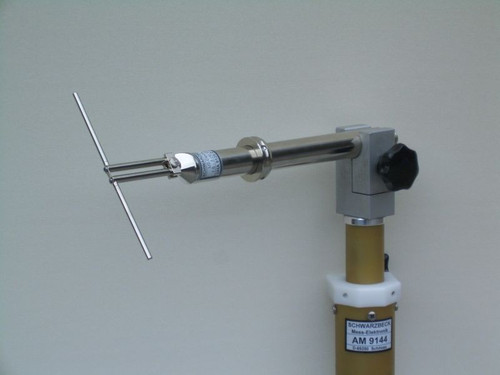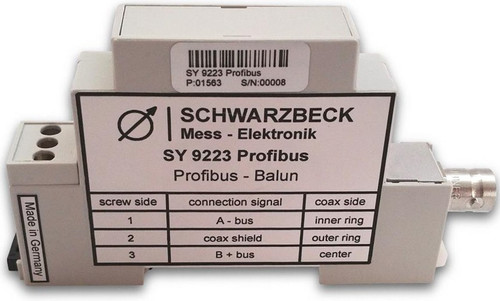Overview
The low loss half wave dipole Schwarzbeck UHA 9125 D has a usable frequency range from 1 GHz to 4 GHz. Depending on the desired center frequency, dipole elements with the corresponding length are supplied. The moveable shorting bar is set to a quarter wavelength to provide a good symmetry.

| Schwarzbeck UHA 9125 D Specifications | |
| Frequency Range | 1 - 3 (4) GHz |
| Impedance | 50 ? |
| Isotropic Gain | 2.15 dBi (theoret.) |
| Gain over Half Wave Dipole | 0 dBd (theoret.) |
| Maximum Input Power | 100 W |
| Directive Patterns | |
| 3 dB Half Power Beamwidth (E-Plane) | 78° |
| H-Plane | circular |
Schwarzbeck UHA 9125 D Application:
Half wave dipoles are often used to generate defined radiated power. The dipole is fed with RF-power, leading to the same fieldstrength reading, as created by the EuT before. (EuT is substituted by a dipole) The required RF-power at the dipole's N-connector is determined, representing the ERP-value (Effective Radiated Power). To obtain the EIRP-value (Effective Isotropic Radiated Power), the RF-power has to be increased by 2.15 dB, because an ideal half wave dipole has an isotropic gain of 2.15 dBi.
Schwarzbeck UHA 9125 D Directional Patterns:
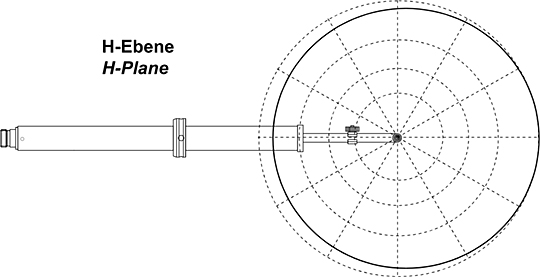
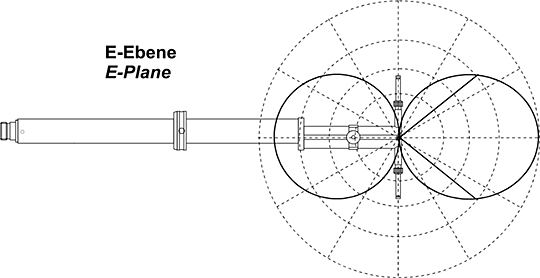
Due to unwanted, but unavoidable reflections at mast adapter, indexing ring and cable etc. the shown directional patterns deviate somewhat from the theoretical pattern shape (typically less than 1 dB). The H-plane pattern of an ideal halfwave dipole is circular. The half power beamwidth (- 3 dB) of the ideal half-wave dipole is 78°. The reflections in the antennas' direct surrounding increase the gain figure in forward direction (to the right in the above sketch) by +0.5 dB typically (theoretical isotropic gain of a half-wave dipole: 2.15 dBi).
Schwarzbeck UHA 9125 D Hints:
The extremely low loss half wave dipole UHA 9125 D can be used without correction factors for nearly all applications. The losses are negligible small (typ. < 0.1 dB). The directive pattern of an ideal half wave dipole is circular in the H-plane, the E-plane offers a pattern similar to an "8".
The maxima can be found perpendicular to the dipole elements. The minima of the E-plane pattern are found on the dipole element axis. The theoretical isotropic gain figure of a half wave dipole is 2.15 dBi, this value might be exceeded slightly (up to + 0.5 dB) in calibration data.
The reason for this gain increase are unwanted reflexions at the mast adapter and other mounting equipment. Since even non metallic materials are very reflective in the microwave frequency range, the mast adapter should be as small as possible in order to minimize the influence on the circular radiation pattern. Suitable mast adapters have an influence of less than 1 dB on the H-plane directivity. If the dipole is set up for vertical polarisation, the coaxial cable should be continued in the same direction as the 22 mm tube as long as possible, otherwise unwanted reflections may affect the measurement results.
The setting of the moveable shorting bar is not critical, even a tolerance margin of +/- 2 mm has a negligible influence on the gain figure. The high operating frequencies require a very small antenna size and a filigree making. Therefore the Antenna should be handled with great care. Bent or damaged element holder threads are not a part of manufacturers' warranty.
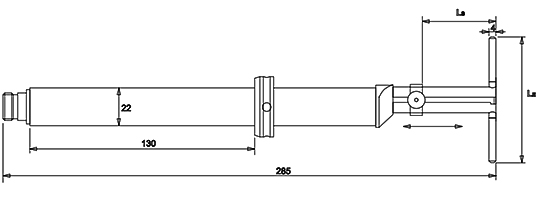
| Element Length | Moveable Short Position | Half-wave resonance | Frequency of maximum gain | Frequency of best impedance matching | Bandwidth with 0.5 dB gain decay | Bandwidth with 1 dB gain decay |
| L E | L S | fλ/2 | f gimax | fSWRmin | B[-0.5 dB] | B[-1 dB] |
| [mm] | [mm] | [GHz] | [GHz] | [GHz] | [GHz] | [GHz] |
| 140 | removed | 1.07 | 0.98 | 0.96 | 0.92 - 1.03 | 0.9 - 1.07 |
| 114 | removed | 1.32 | 1.2 | 1.19 | 1.1-1.35 | 1.07-1.65 |
| 90 | 45 | 1.67 | 1.65 | 1.52 | 1.4 - 1.8 | 1.4 - 2.15 |
| 72 | 36 | 2.08 | 2.0 | 1.9 | 1.7 - 2.3 | 1.65 - 2.45 |
| 60 | 30 | 2.50 | 2.3 | 2.3 | 2.1 - 2.7 | 2.03 - 2.75 |
| 48 | 24 | 3.13 | 3.3 | 3.1 | 2.8 - 3.7 | 2.65 - 3.8 |
| Other Element Lengths are available on request | ||||||
Since unwanted reflections are apparent in all practical applications, the tabular values have been determined using a multiple averaging technique (different distances, different angles of the H-plane pattern, height variation). To obtain best measurement results the mast / adapter should be as small as possible.

